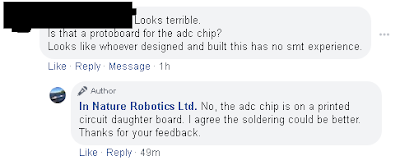There are some remaining issues to sort out about making sure that everything fits into the waterproof box, but these should be solved soon.
Yesterday I had a good meeting with a project manager at the City of Fredericton to discuss AMOS and the possibility of doing a pilot study this summer for measuring blue-green algae levels in the St. John River. A few years ago some dogs died after drinking river water that was contaminated by toxic concentrations of blue-green algae in the river, so the city has some interest in setting up a monitoring program to detect when and where blue-green algae might be a problem.
Later on today I'll be speaking to the Raspberry Pint club... I'll post a quick update afterward on how it went!
Update: The presentation to the Raspberry Pint club went pretty well I think. I was a bit unprepared for the slideshow not working as planned under Google Hangouts, but it seemed to work acceptably well when not presented in full-screen mode.and there was some good interest and questions from the people in attendance afterward. There were other interesting projects presented also; my favorite was a 3.5" floppy disk drive that a guy had rigged up to play individual songs through Spotify. Basically each 3.5" disk had some Spotify-related links and text written to file(s) on the disk which were read and would start playing the desired song after the disk was inserted.










